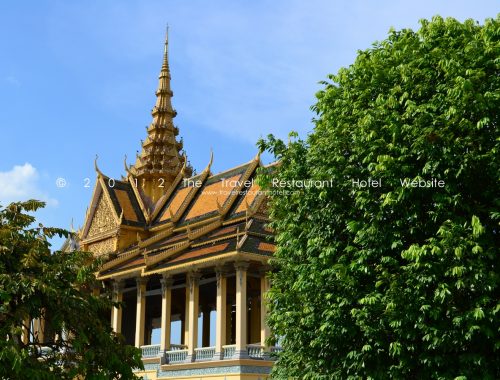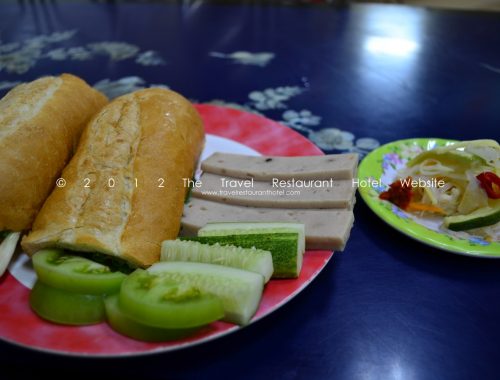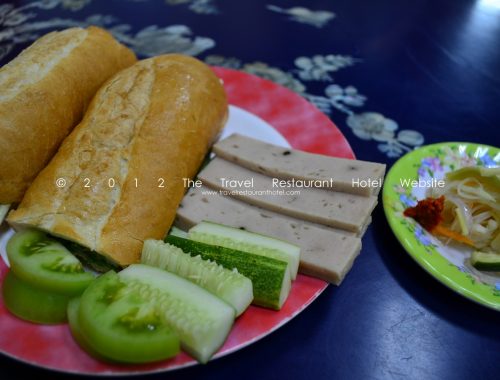Getting around Phnom Penh
Tuk tuks and motorbike taxis (you ride on the back) for hire are everywhere – outside your hotel, outside tourist sites, literally at every corner.
Brutally frank:
Any trip from within the city center (which I consider to be bounded by Wat Phnom in the north and the Russian Market aka Psar Toul Tom Poung in the south) should not cost more than US$2-4 on tuk tuk or US$1-2 on motorbike. If you travel all the way from Wat Phnom to Russian Market, then US$4 for Tuk-tuk is expected. If you travel half-way eg Wat Phnom to Independence Monument, US$2 is okay. If you travel 3/4 through the city centre, the driver would ask for US$3, then US2.50 but I managed to bargain it down to US$2.
The drivers tend to ask for higher prices during peak hours in the morning and evening when people go to/ get off work. But due to the supply of Tuk-tuks and motos, you can usually stick to the above pricing.
Please don’t expect a speedy ride on Tuk-tuks. They are powered by twitchy moto engines and journeys can be painfully slow, especially if there are many passengers or if you are coming from/ going to the airport and you have many bags.
Though they have roll-down side curtains, I wonder how much they would protect you from the rain in a typical wild Phnom Penh thunderstorm. Luckily, I did not live to find that out.
Moto drivers do not carry an additional helmet for the passenger. Riding on a moto sans helmet, though cheaper, is obviously risky. Always wear sturdy footwear when riding a moto. A tumble can mean serious injury and a lot of pain (the hospitals in Phnom Penh are reputedly not up to standard yet). Imagine you are the beach in Sihanoukville, riding on a moto, in a tank top, shorts and flip-flips. It takes a true act of grace from above not to have anything happen.
Tuk-tuk drivers tend to speak better English than moto drivers.
Remember, always to get a card from your hotel with the address in Khmer so you can always show to your driver. Though Tuk-tuk drivers often have a map on board, it can’t hurt to have one on you too.
It helps to have small notes eg US$5, US$1. They may have difficulty even for change for US$10.
툭툭과 오토바이 택시(승객은 오토바이 운전사 뒤에 탑니다)는 호텔 바깥, 관광지 바깥이나 어디에서나 탈 수 있습니다.
도심에서 어디로 어디를 가든, 툭-툭으로는 2-4달러, 오토바이로는 1-2달러를 넘지 않습니다. 왓 프놈에서 러시안 마켓까지 이동하실 경우 툭-툭 요금은 4달러 정도입니다. 절반 거리인 왓 프놈에서 독립기념관까지 이동하신다면 2달러면 충분합니다. 만일 도시 중심가에서 4분의 3정도를 이동하신다면 운전사는 2.5달러 대신 3달러를 요구 할 텐데 저는 2달러에 흥정을 했습니다.
아침이나 저녁처럼 사람들이 출퇴근하는 피크 타임의 경우 운전사들이 좀더 높은 요금을 요구할 수도 있습니다. 하지만 툭-툭이나 오토바이가 많이 다녀 보통은 높은 가격을 지불하는 경우는 별로 없습니다.
툭-툭을 타시면서는 속도를 기대하지는 마십시오. 딸깍거리는 모터 엔진을 동력으로 하기도 하고 특히 행인들이 많거나 많은 짐을 가지고 공항에서 혹은 공항으로 가는 경우는 이동하는 경우는 매우 느릴 수도 있습니다.
측면에 내릴 수 있는 커튼이 있기는 하지만 그렇다고 해서 그것들이 프놈펜의 통상적인 폭풍우에서 얼마나 승객을 지켜줄지는 의문입니다. 다행히도 저는 그러한 폭풍우를 겪지는 않았습니다.
오토바이 운전사들은 승객용 헬멧을 가지고 다니지 않습니다. 헬멧을 쓰지 않고 오토바이에 타는 것은 싸기는 하지만 위험한 것은 사실입니다. 오토바이에 타실 때는 항상 튼튼한 신발을 착용해주십시오. 한번 굴러 떨어지는 것만으로도 심각한 부상을 입거나 큰 통증을 겪을 수 있습니다. (프놈펜의 병원들은 아직은 권장할 만한 수준에 미치지 못하는 것으로 유명합니다) 귀하가 시아누크빌에 있는 해변가에서 탱크톱에 반바지, 플립플랍 슬리퍼를 신고 오토바이에 타는 것을 상상해보십시오.
툭-툭 운전사들은 오토바이 운전사보다 대개 영어를 더 잘 합니다.
운전사에게 언제나 보여주기 위해 항상 크메르 내의 주소가 기재된 호텔 카드를 소지하는 것을 잊지 마십시오. 툭-툭 운전사들이 대개 지도를 가지고 있기는 하지만 귀하께서도 지도를 소지하는 것이 좋습니다.
5달러나 1달러 같은 잔돈을 준비해주십시오. 10달러 조차 환전이 어려울 수 있습니다.
Se déplacer
Les Tuk tuk et les motos-taxis (vous montez derrière) à louer se trouvent partout – en dehors de votre hôtel, en dehors des sites touristiques, littéralement à chaque coin de rue.
Tout voyage de l’intérieur du centre-ville (que je considère être délimitée par Wat Phnom dans le nord et le marché russe alias Psar Toul Tom Poung dans le sud) ne devrait pas coûter plus de US$2-4 en tuk tuk ou US$1-2 en moto. Si vous faites tout le trajet de Wat Phnom au marché russe, US$4 en tuk-tuk est donc attendu. Si vous faites la moitié du trajet par ex. de Wat Phnom au Monument de
l’Indépendance, US$2 est correct. Si vous traversez 3/4 du centre-ville, le conducteur demanderait US$3, puis US$2.50 mais j’ai réussi à le négocier à la baisse de US$2.
Les conducteurs ont tendance à demander des prix plus élevés aux heures de pointe le matin et le soir quand les gens vont au/rentrent du travail. Mais en raison de nombres des Tuk-tuk et des motos, vous pouvez généralement vous en tenir aux prix ci-dessus.
Veuillez ne pas attendre un tour rapide en Tuk-tuk. Ils sont propulsés par des moteurs sautillantes de moto et les voyages peuvent être péniblement lent, surtout s’il y a beaucoup de passagers ou si vous venez de/allez à l’aéroport et vous avez de nombreux sacs. Même s’ils ont des rideaux qui descendent sur les côtés, je me demande combien ils vous protégeraient de la pluie dans un orage sauvage typique de Phnom Penh. Heureusement, je n’étais pas là pour le découvrir.
Les conducteurs de motos ne sont pas munis d’une casque supplémentaire pour le passager. Bien que moins chers, rouler sur moto sans casque est évidemment risqué. Portez toujours des chaussures résistantes lorsque vous roulez en moto. Une chute peut signifier une blessure grave et beaucoup de douleur (les hôpitaux à Phnom Penh sont réputés de ne pas encore être conformes aux
normes). Imaginez que vous êtes sur la plage de Sihanoukville, vous roulez en moto, vous êtes en débardeur, short et tongs. Il faut un véritable acte de grâce pour empêcher quelque chose d’arriver.
Les conducteurs de Tuk-tuk ont tendance à mieux parler l’anglais que les conducteurs de moto. Rappelez-vous, obtenez toujours une carte de visite de votre hôtel avec l’adresse en khmer de sorte que vous pouvez toujours montrer à votre conducteur. Quoique les conducteurs de Tuk-tuk ont souvent une carte à bord, ça ne fera pas de mal de garder une sur vous aussi.
Il est utile d’avoir des petites notes, par ex. US$5, US$1. Ils peuvent même avoir des difficultés de changer US$10.
Come spostarsi
Di tuk-tuk e mototaxi (motorette dove il passeggero siede dietro) a noleggio se ne trovano ovunque, fuori dall’albergo, dai siti turistici, proprio ad ogni angolo.
Per qualsiasi spostamento dal centro città (diciamo da Wat Phnom a nord fino a Psar Toul Tom Poung, il mercato russo,a sud) non si pagano più di 2-4 dollari in tuk-tuk o di 1-2 dollari in moto. Per i tragitti in tuk-tuk dall’estremità di Wat Phnom al mercato russo invece, il prezzo si aggira sui 4 dollari . Se ci si ferma a metà strada, ad esempio da Wat Phnom al monumento dell’indipendenza, 2 dollari è da considerarsi una tariffa ragionevole. Facendo tappa a 3/4 del tragitto, passando per il centro, è probabile che vi chiederanno prima 3 dollari, poi 2 dollari e mezzo, anche se io sono riuscito a scendere a 2.
Gli autisti tendono ad aumentare le tariffe nelle ore di punta, la mattina e la sera, quando la gente si reca al lavoro o torna a casa. Tuttavia, considerata la scelta di tuk-tuk e motorette, ci si può attenere ai prezzi indicati sopra.
In tuk-tuk è meglio non avere fretta! Essi sono azionati da motori spesso “a singhiozzo” e ciò rende gli spostamenti penosamente lenti, soprattutto se si è in molti passeggeri o carichi di bagagli per tornare o andare all’aeroporto.
Eh sì, le tendine laterali girevoli ci sono, ma mi chiedo quanto proteggano dalla pioggia nel bel mezzo di uno di quei temporali furiosi, tipici a Phnom Penh. Per fortuna non ho avuto l’occasione di scoprirlo.
I moto-taxi non tengono un casco in più per il passeggero. Anche se costa poco, girare senza è ovviamente pericoloso. Quando si prendono i moto-taxi è bene portare sempre delle scarpe solide. Basta una caduta per farsi una bella ferita dolorosa (e gli ospedali a Phnom Penh godono ancora di una reputazione mediocre). Immagina di girare in motorino sulla spiaggia di Sihanoukville in canottiera, calzoncini e infradito. Se non ti succede niente è proprio una grazia dal cielo!
Di solito i conducenti dei tuk-tuk parlano inglese meglio di quelli dei moto-taxi.
Ricordati sempre di chiedere all’albergo un bigliettino con l’indirizzo in khmer per poterlo mostrare all’autista in caso di necessità. I tuk-tuk tengono spesso a bordo una cartina, ma averne una con sé non guasta.
È utile avere in tasca della moneta “spiccia” da 1 o 5 dollari. A volte non hanno il resto nemmeno per 10 dollari.
You May Also Like

로열 팰리스(Royal Palace), 프놈펜 (한국의)
September 7, 2012
Local Cambodian Street Food, Phnom Penh
April 22, 2012

